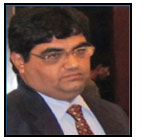

Despite being more expensive than oil-filled
transformers, open ventilated dry type
transformers are not only safer and reliable
but also cost-effective, note the authors.
Power and distribution (P&D)
transformers can be classified
into two main categories: liquid
filled and dry type. When referring
to P&D transformers, it is the liquid
filled transformer that comes to
mind. However, advancements in
dry type transformer design in more
recent years have substantially
increased their use. Further, there are
many cases in which the application
of liquid filled transformers is
forbidden due to safety regulations.
For instance, in buildings, factories
or public assembly places where
liquid filled transformers may be
employed only under special
circumstances.
From the cost viewpoint, the
mineral oil filled transformer
remains the cheapest. However, dry
type transformers can be situated
close to the consumer so that use of
expensive low voltage supply
lines is minimized. Also there is
no need for safety installations
characteristic of liquid filled
transformers. So from TOC point
of view, dry type transformer may
be less costly than the
liquid filled transformer because
it evaluates all costs from
purchasing, installation, maintenance,
operation to disposal.
This paper describes requirements
of insulation materials that are used
in dry type transformers with a
focus on open ventilated dry type
transformers (OVDT).
Safety: One of the worst mishaps in
New Delhi, India had been the fire at
UPHAAR Cinema in 1997. It has been
determined that the cause of fire was
the explosion of liquid filled
transformers. As a result of the
accident, the Ministry of Power has
mandated that only dry type
transformers shall be used for
installation inside the residential &
commercial buildings [Indian
Electricity Rules - 1956, amended with
Rule No. 64 (2) (C) (II) in 2001]. In
addition to this, IEC60076-11 that is a
standard for dry type transformers
reinforced safety against fire with a
fire behavior test in 2004. This test
measures highest temperature and
smoke volume emitting from burning
coil during a test in the furnace as test
criteria. Transformers passed this test
may minimize losses on people and
properties caused from explosion and
fire in transformers.
Composition: Dry type
transformers are those which use air
or other gases as the primary cooling
medium, as opposed to fluids, such as
mineral oil. They use solid insulation
materials, such as papers, sheet
laminates, plastics, varnishes, and
resins to protect the electrical circuits
from one another and from
ground (earth).

It is categorized into ventilated
design, solid resin cast design, semi
encapsulated design, sealed/gas
filled design. Ventilated designs have
varnish coatings and rely on cooling
ducts for the transfer of heat out of
coil, which is normally named by
open ventilated dry type
transformer (VDT). Most of VDT
manufacturers take VPI (vacuum
pressure impregnation) technology
to produce for power and
distribution application.
Untitled Document
Relative |
Dielectric |
Dissipation |
Volume |
| Humidity |
Constant |
Factor |
Resistivity |
| (%) |
(60 Hz) |
(60 Hz) |
(ohm-cm) |
| Dry |
2.5 |
0.006 |
1016 |
| 50 |
2.7 |
0.006 |
1016 |
| 95 |
3.2 |
0.011 |
1014 |
The main advantage of open
ventilated dry type transformers are
the high level of safety when installed
in or near buildings; without fire or
explosion danger, it is possible to
construct the substations in the direct
vicinity of the consumers. It makes no
difference whether these stations are
installed in a cellar, in the center of a
floor or under the roof of a factory.
MAIN ADVANTAGES: - Can be placed close to the load. It is
due to inherent safety of dry type
transformers, which enables less
energy loss of LV cables.
- Increased emergency overload
capability
- Additional advantages of class H
VDT are easy to repair (open coils),
great flexibility of coil size/shapes
(no mold for casting), no cracking
(no blocks of solid resin), reduce size
and weight per kVA
Common applications of dry type
transformers are as follows.
- Power and distribution up to 35KV
- UPS (uninterruptible power supply,
class H)
- High intensity discharge lighting
ballasts
- Microwave ovens (220 Deg class)
- Welding machine (class H)
- Furnace (class H)
- Mining, underground (class H)
- Nuclear power plants (class H)
- General purpose power
- Onboard ship / marine power
(class H)
WHAT MAKES OVDT
SAFER AND RELIABLE?
For the above applications, Nomex®
aramid paper is used with its superior
performances. It provides a unique
combination of properties found in no
other insulating materials, having the
following properties:
- Long term stability for continuous
exposure to 220ºC
- Will not melt, flow or support
combustion below 250 ºC
- Strong resistance to acids and
alkalis
- Compatible with all varnishes,
resins, adhesives, and fluorocarbons
- Stable properties over a wide
range of temperature and moisture
conditions
- Inherently flame retardant; self
extinguishing
Nomex® is a class C insulation
material which performs at 220 Deg
C. The insulation used on the
conductors for ReliatraN™ cobranded
transformers is 2Mil
Nomex® paper and all other solid
insulation material used for
manufacturing of these transformers
is class H.
Fire behavior performance: When the
fire behavior test is performed on dry
type transformers (IEC 60076-11) using
Nomex, better has optical transmission
factor (OTF) during burning was
found. The graph below indicates OTF
(visibility) of about 60 to 75 per cent for
a time period ranging from 5 minutes to
45 minutes (Max standard temperature
range) of burning. Fig 1 illustrates
better visibility as the smoke is not
dense or black.
In case of fire people do not die of
fire but the damage is due to the
suffocation in toxic smoke. The
injuries to people trapped in the fire
are due to stampede because of poor
visibility.
The figures alonside compare the
flame resistance behavior of Nomex®
with other materials used in the dry
type transformers, It is found that the
Limiting Oxygen Index of Nomex® is
very high which means that it requires
more oxygen to burn and when this
insulation is burnt it does not support
combustion so it does not spread fire.
ENVIRONMENTAL AND
CLIMATIC CONDITIONS
PERFORMANCE
VDT
Transformers are well protected
from invasion of water high quality
vacuum impregnation technology
using the most modern equipment
(e.g. Epoxylite). Nomex® is not
adversely affected by water, even if it
does become exposed to 95% RH. It
retains-80% of dielectric strength; low
dielectric constant and dissipation
factor and superior volume resistivity.
The VPI (Vacuum Pressure
Impregnated) varnishes used with UL
approval for usage at 180°C and higher
for continuous operation in the
hottest areas. Nomex® insulation is
fully coated with varnish makes the
encapsulation of the transformer.
TEMPERATURE LIMITS
The insulation system of
transformers represent the highest
temperature the electrical winding
can accept while operating at the
highest load condition (Hot Spot) and should have insulating materials which at least match
this rating
CONCLUSION
The OVDT aramid based designs safer, reliable and help
in reducing the environmental foot print. With the
increasing load demand and the load density of
individual house hold these transformers with
inherent overload capacities are the best option for the
builders, utilities and the industry.
The OVDT transformers made out of Nomex®
insulation will tend to resist to the fire as the material
does not support fire, and an unfortunate case of fire
these transformers will help save the human lives and
reduce the loss due to fire.
The inherent properties of the insulating material
used and the VPI technology make the transformers
resistant to environmental effects.
Untitled Document
TEMPERATURE LIMITS FOR VARIOUS INSULATION CLASSES |
| Insulation |
Temp |
Temp |
Ambient |
Hot Spot |
Hottest |
| Class |
Rise |
Class |
Temp |
Allowance |
Temp |
| Class B |
80 |
130 |
40 |
10 |
130 |
| Class F |
100 |
155 |
40 |
15 |
155 |
| Class H |
125 |
185 |
40 |
20 |
185 |
| Class C |
150 |
220 |
40 |
30 |
220 |
| Highest Temperature = Average Winding Rise (K) + Max. Ambient + Hot Spot Allowance |
The higher temperature endurance of the Nomex®
helps the OVDT transformers to bear short term
overload without damage to the insulation.
(About the authors: Sailesh Purohit, BE (Electrical),
ME (Control Systems) is Manager Technical India (ES),
DuPont Protection Technologies and Dilip Patel, an
Electrical Engineering from M.S. University, Baroda, is
Consultant - E.I. DuPont (I) Ltd)